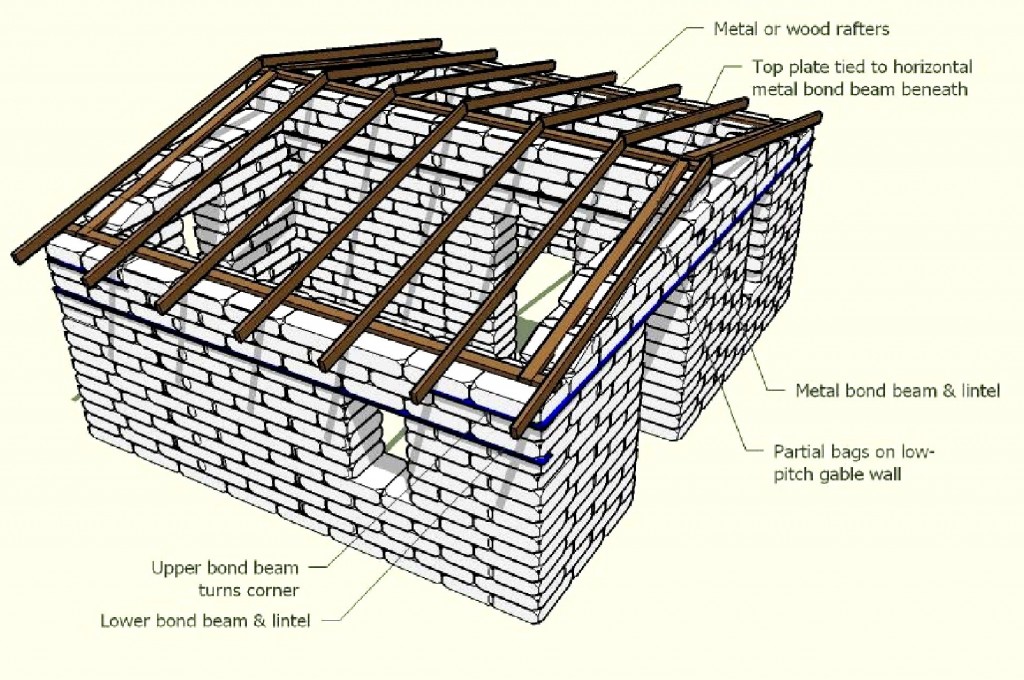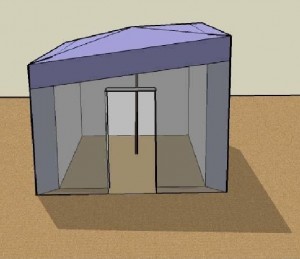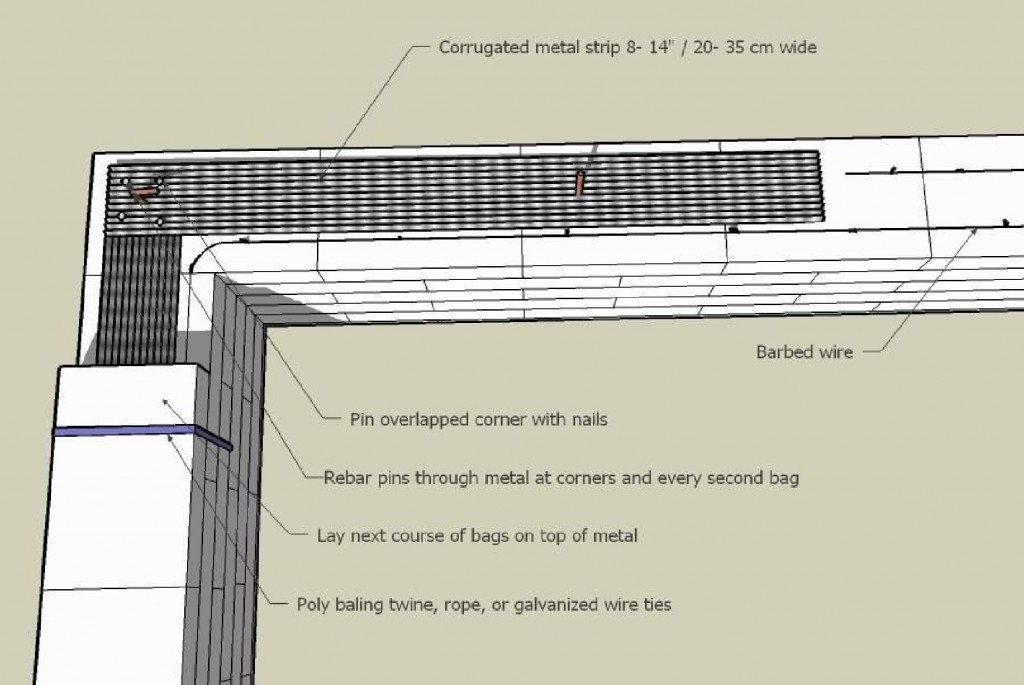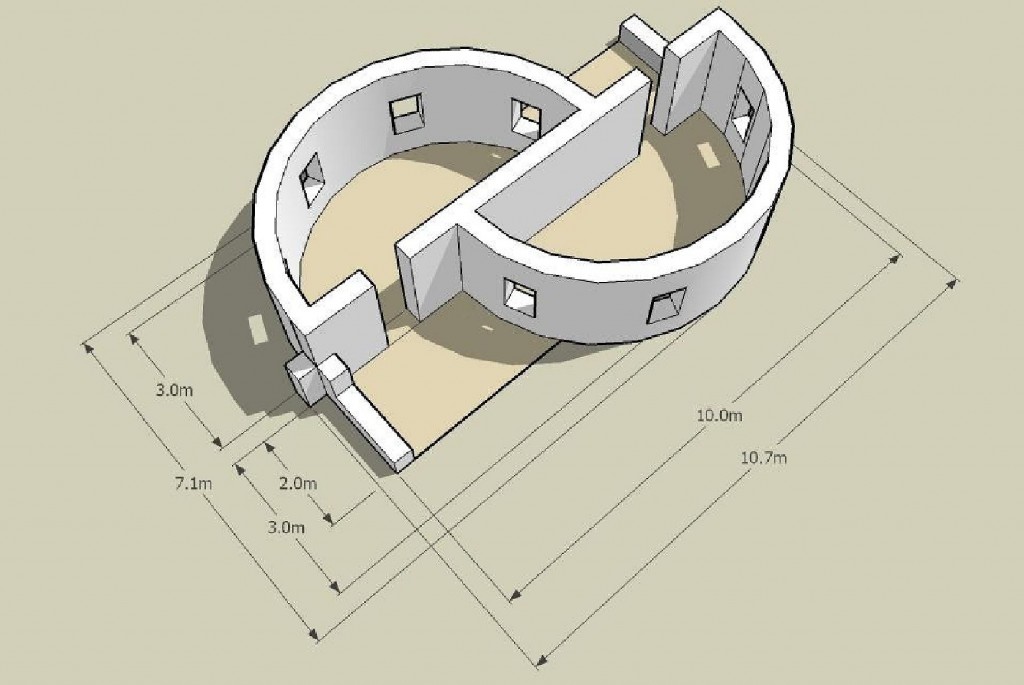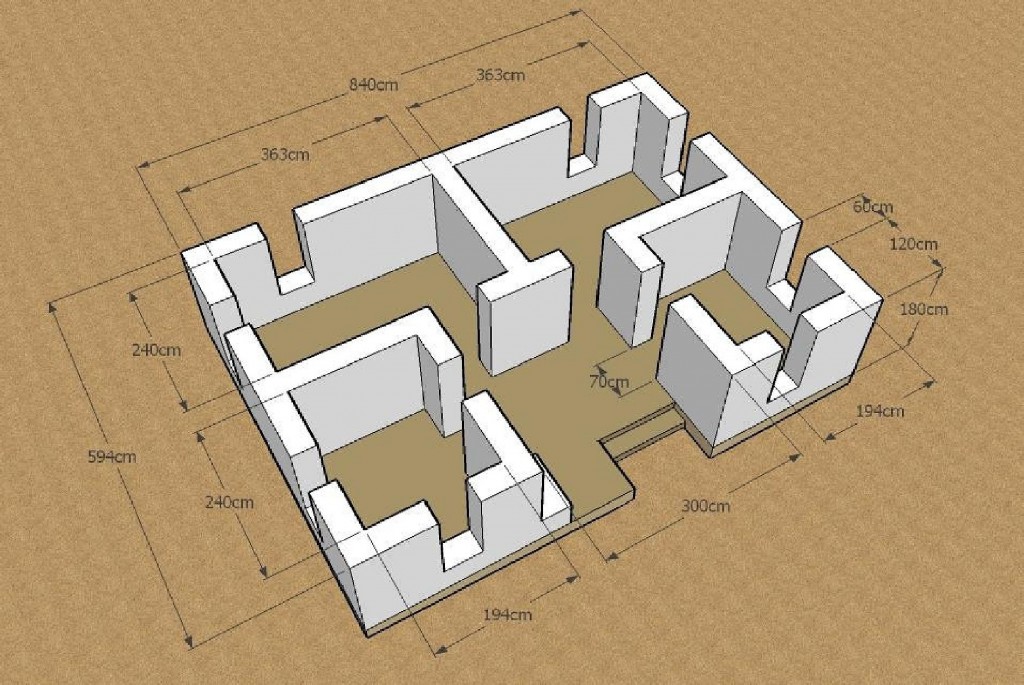Earthquake-resistant Shelters
3-13-2010
Patti Stouter, landscape architect for www.earthbagbuilding.com & www.earthbagstructures.com
This is our most recent version, and is still in process.
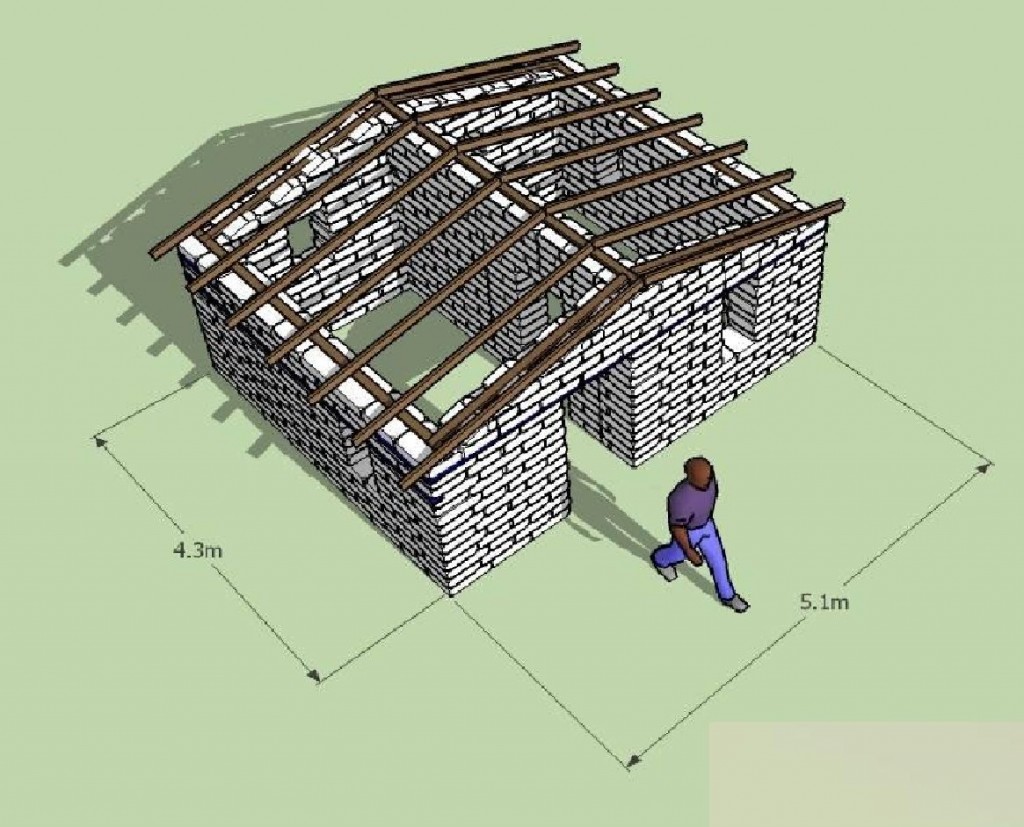 This duplex has 175 sf of floor area (16 square meters). Each room inside is a little larger than 7 x 12’ (2 x 3.7m).
This duplex has 175 sf of floor area (16 square meters). Each room inside is a little larger than 7 x 12’ (2 x 3.7m).
How many people can live in it depends on the culture (needs for separate bedrooms). We believe 10+ people could use this space.
Without considering shipping costs materials are approximately $550 US with a temporary tarp roof.
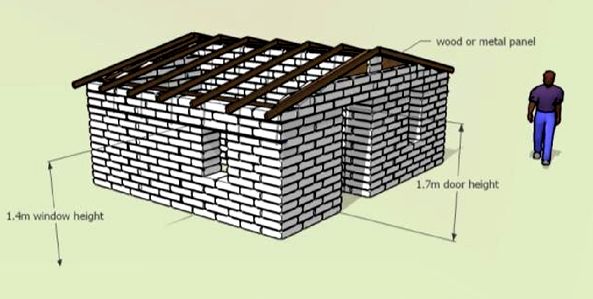 The walls can be raised when a permanent roof is installed in the future.
The walls can be raised when a permanent roof is installed in the future.
This design includes a reinforced composite bond beam of corrugated metal strip tied to 3 rows of bags and a wood top plate. (The bond beam is actually centered in the wall, but shown below conceptually).
This will provide weight to hold the roof down in strong winds as well as stiffening to unite the structure and resist earthquake shocks. This house type can be doubled to make a quad shelter.
An alternate use, shown below, when there is great need for shelter is to build 2 separate units and suspend tarp shelter walls between them. The materials for this would cost under $1000 US with tarp roofs.
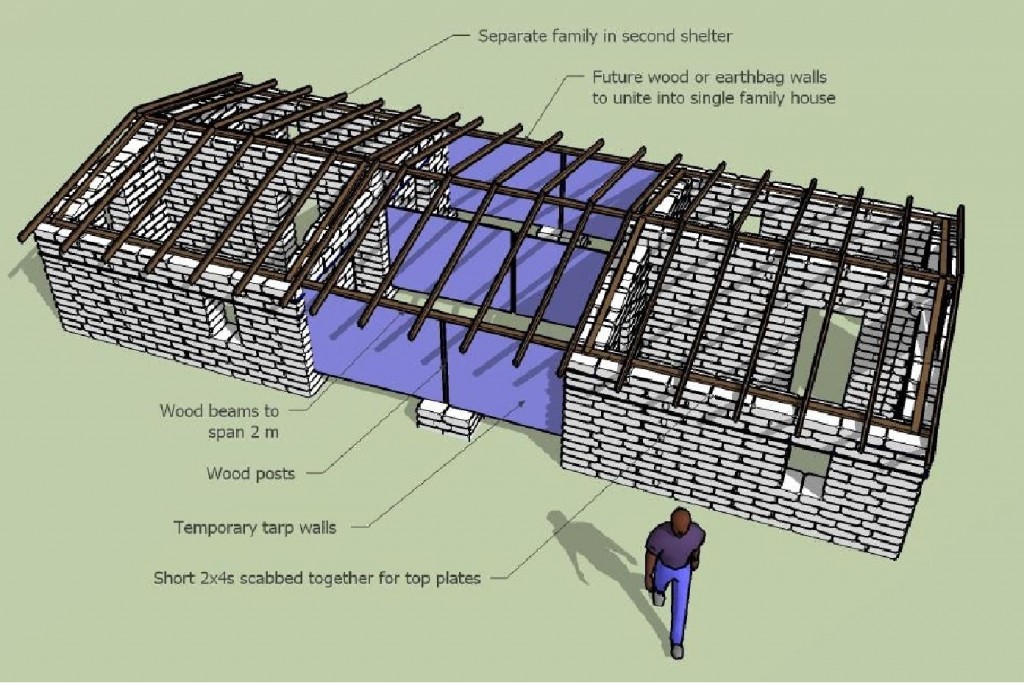 Sometimes wood or metal for rafters is not available. A vertical pole in each room can provide temporary bracing and allow tarp roofing without rafters.
Sometimes wood or metal for rafters is not available. A vertical pole in each room can provide temporary bracing and allow tarp roofing without rafters.
Strong earthbag structures do not require cement. They do require barbed wire, strapping or nylon cord. Some rebar is needed unless corners are overlapped in classic adobe buttressing style.
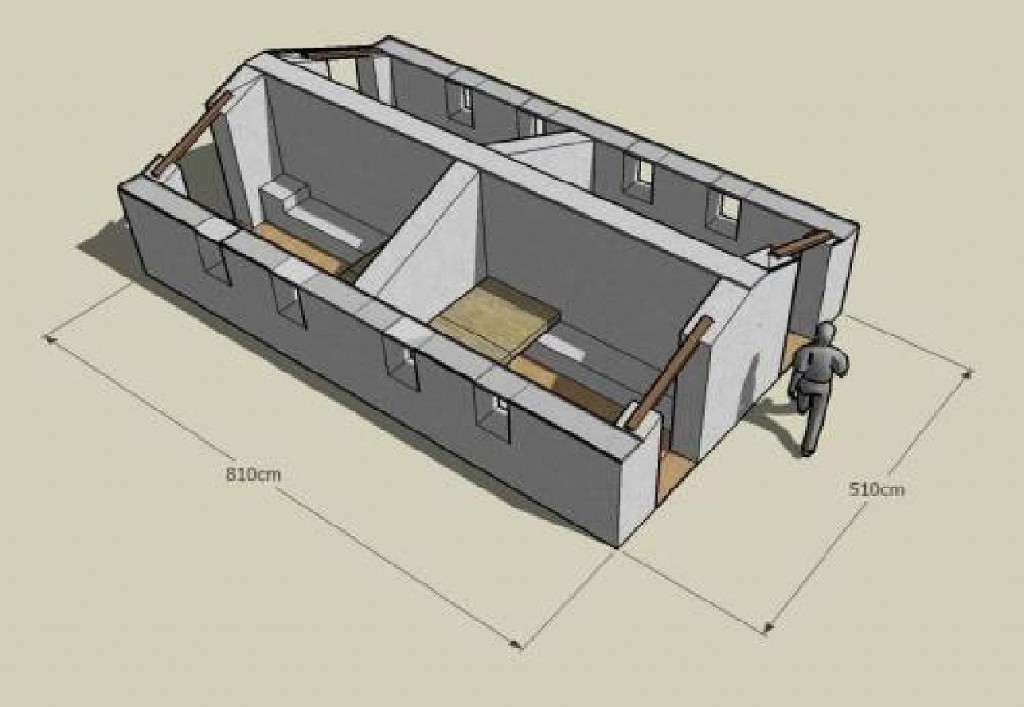 Earthbag shelters in non-seismic areas can have lower walls because they do not need as strong a bond beam. They will need some wood or metal as lintels across openings to stiffen the structure.
Earthbag shelters in non-seismic areas can have lower walls because they do not need as strong a bond beam. They will need some wood or metal as lintels across openings to stiffen the structure.
A quad shelter like the one at right might cost only $600 for materials. If laborers are paid $5 a day, it might cost about $200 to pay them to build each unit.
If no very little wood or metal is available, the natural strength of curving walls can be used, if these shapes are acceptable to recipients. Curving walls are quicker and more economical to build in earthbag than rectangular buildings with corners.
Curving wall sections could have a top bond beam of one or two layers of monolithic tubular earthbag, with or without some cement stabilization.
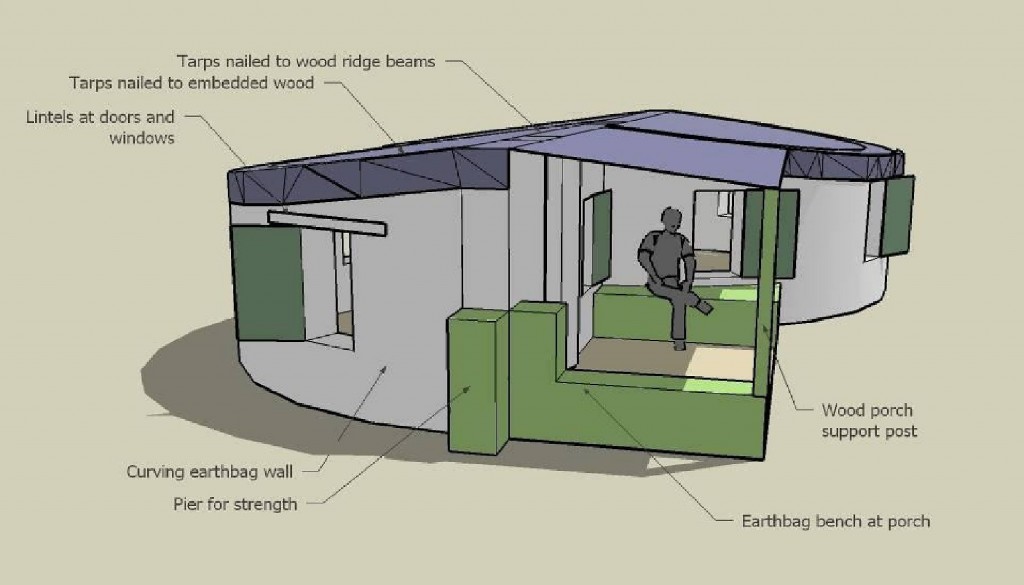 Nailer boards of scrap wood can be embedded in the walls and tarps nailed tightly to resist winds. For a tension roof structure, round walls are strongest.
Nailer boards of scrap wood can be embedded in the walls and tarps nailed tightly to resist winds. For a tension roof structure, round walls are strongest.
These preliminary sketches can be modified to adapt the appearance of the buildings to the local traditional housing shapes. The quad plan below would be much more useful in a culture with large extended families.

